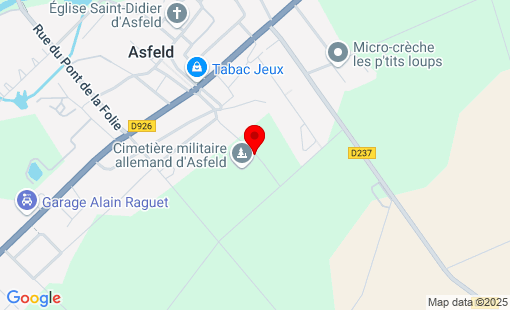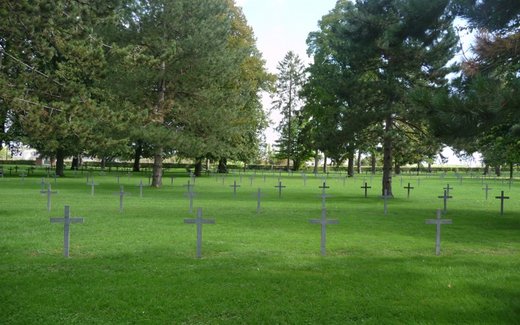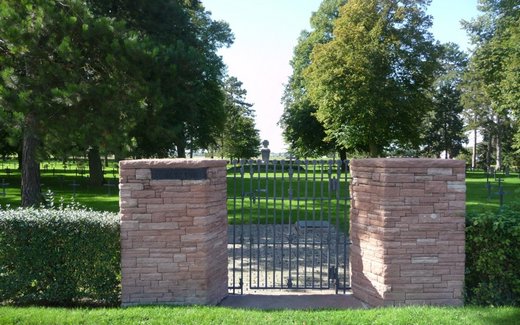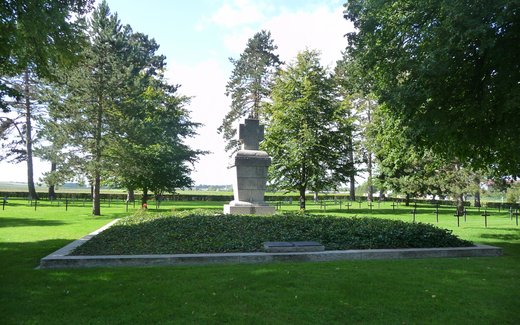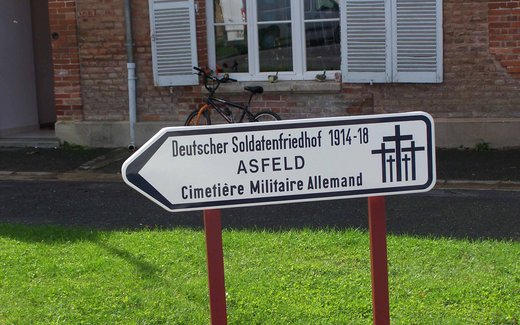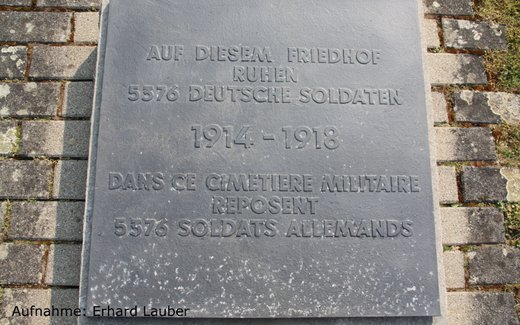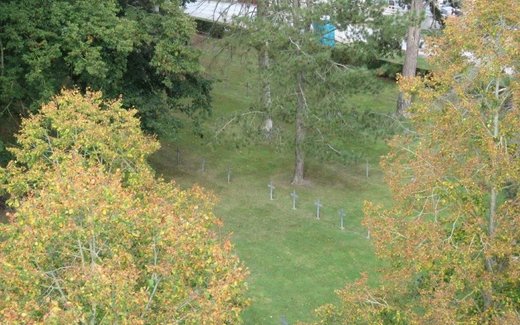Département Ardennes - 5,386 German war dead - First World War
The German military cemetery Asfeld-la-Ville was established on April 11, 1917 by the German troops at the beginning of the French offensive, when numerous severely wounded soldiers were transferred from the front area to more remote military hospitals. The fallen from the advance in August 1914 and the Battle of Reims in September/October 1914 were also reburied here. However, the majority of the dead came from the heavy fighting in Champagne, on the heights before Reims and at Chemin-des-Dames in April/May 1917. The proportion of dead from the offensive and defensive battles in the spring and autumn of 1918 is also large. The French military authorities expanded the cemetery in 1920 by adding bodies from 48 municipalities and districts within a radius of up to 30 kilometers.
Among those interred from Villers-devant-les-Tours (approx. 7 kilometers north of Asfeld) was the oldest fallen war volunteer of the German army, Lieutenant d.R. René Caspar Gregory, who lost his life at the age of 71 as head of a graves administration detachment near Neufchateau on the Aisne while recovering fallen soldiers from a grenade. (Block 7 - grave 88). born in the USA in 1846, he came to Germany in 1873 to complete his studies. He completed his doctorate and habilitation in Leipzig and was appointed full honorary professor in 1891 after acquiring Saxon citizenship in 1881. His life's work was the discovery, research and classification of New Testament manuscripts. To this end, he undertook extensive research trips, in which his knowledge of 16 modern languages was particularly helpful. On August 11, 1914, he enlisted as a war volunteer.
Repair work between the wars
The first work to improve the condition of the cemetery was carried out by the Volksbund Deutsche Kriegsgräberfürsorge e.V. from 1927 onwards on the basis of an agreement with the responsible French military authorities. This involved the construction of a new entrance with a natural stone wall and wrought-iron gate as well as the planting of trees and bushes. However, the problem of permanently marking the graves initially remained unresolved due to a lack of foreign currency and the outbreak of the Second World War in 1939.
Final design
After the conclusion of the Franco-German War Graves Agreement of July 19, 1966, the Volksbund Deutsche Kriegsgräberfürsorge e.V. was able to begin the final design of the German military cemeteries in France from the time of the First World War. In addition to a thorough landscaping overhaul, in which volunteers from the Volksbund's youth camps were actively involved, from 1976 the temporary wooden grave markers were replaced with permanent metal crosses with the names and dates of the dead cast into them. Young helpers were also involved in this work. They moved the 35-kilogram concrete foundations for the crosses, which had been transported by the German army. This was a particularly impressive way for both the young people and the soldiers to support the Volksbund in fulfilling its tasks.
Of the 5,386 fallen, 4,506 rest in individual graves; twelve remain nameless. 42 are known in the common grave with 870 victims.
For religious reasons, the eight graves of fallen Jews were given a natural stone stele instead of a cross. The Hebrew characters read:1. (above) "Here rests buried .... ." 2. (below) "May his soul be interwoven into the circle of the living."
